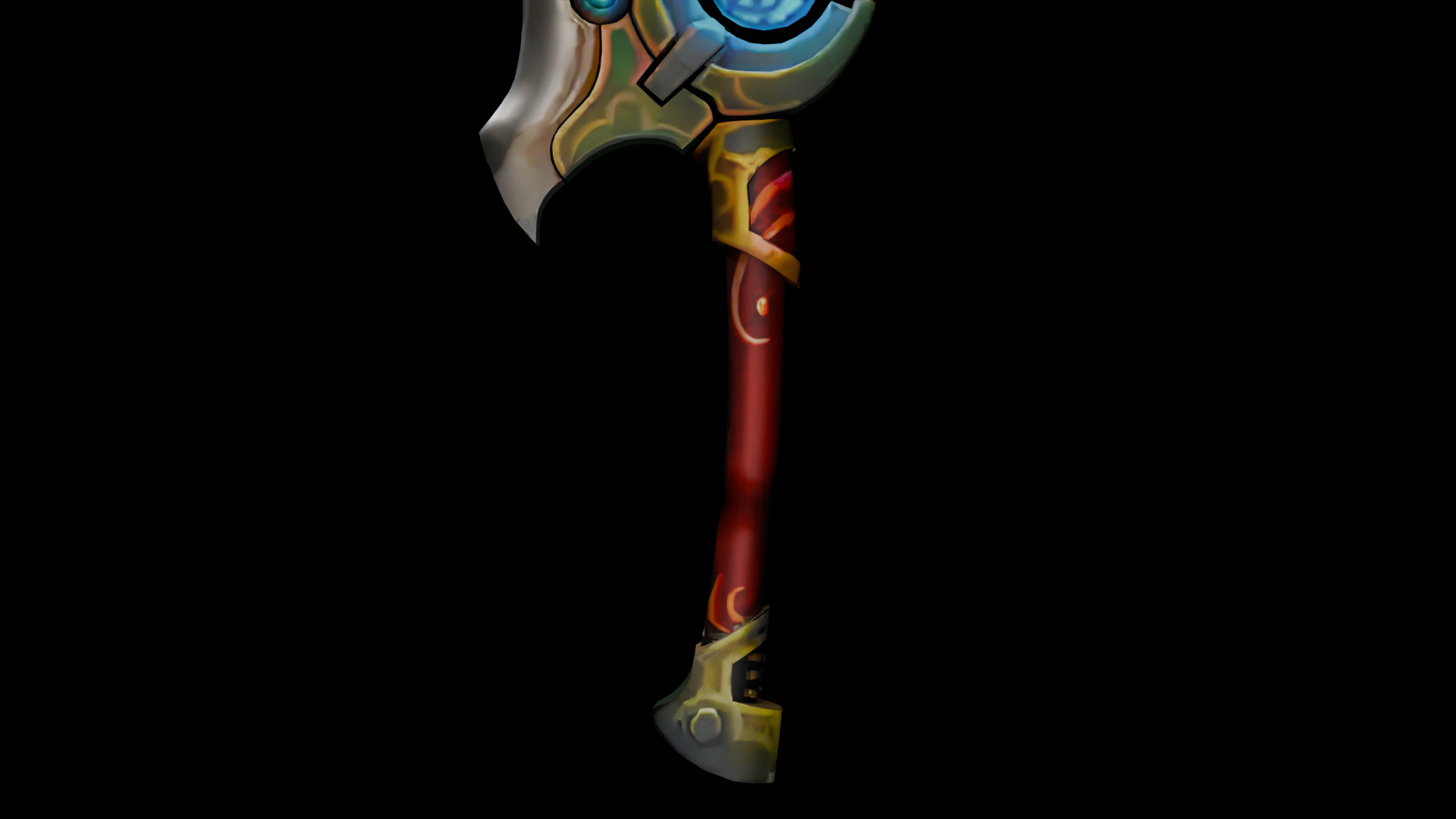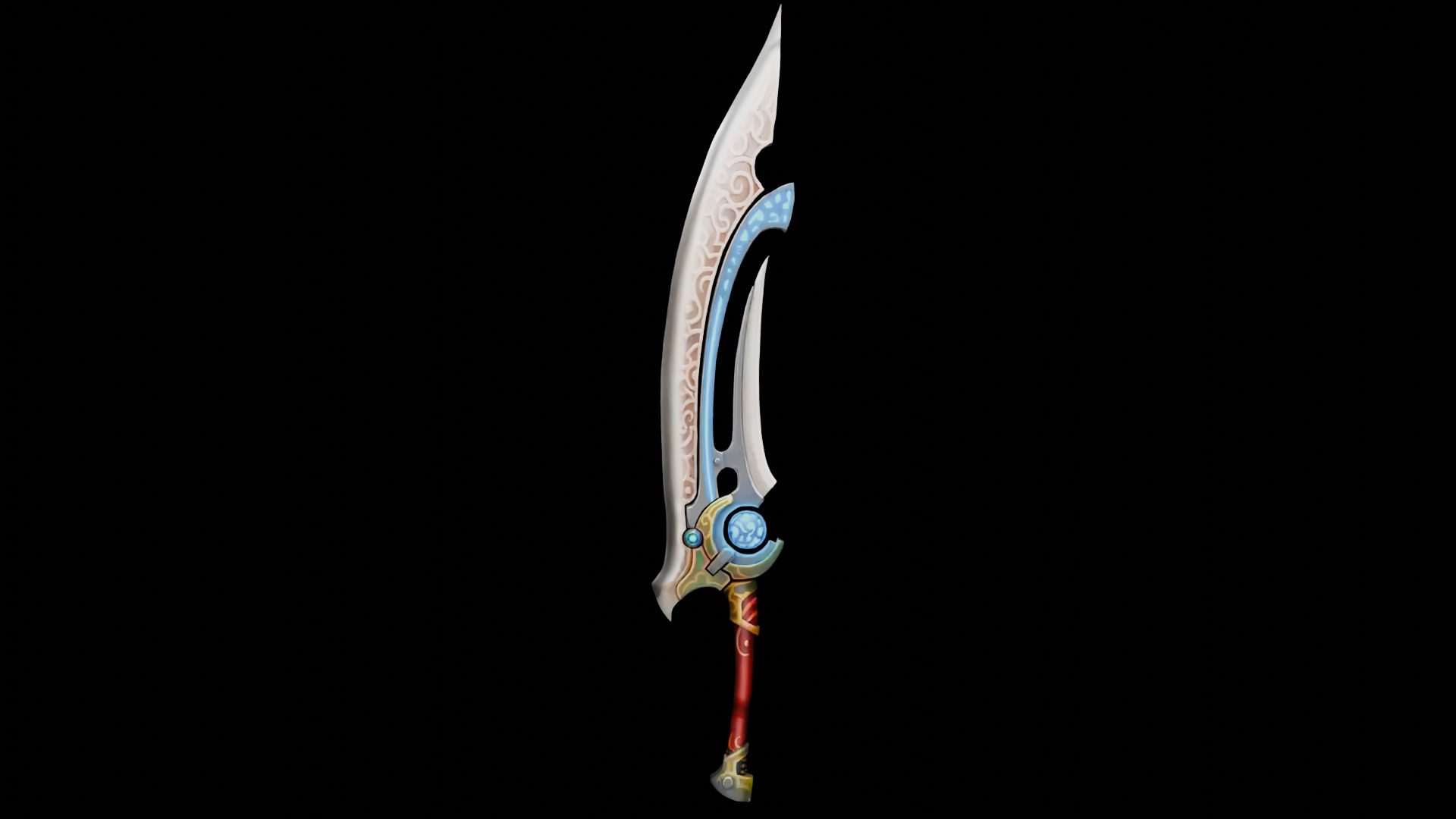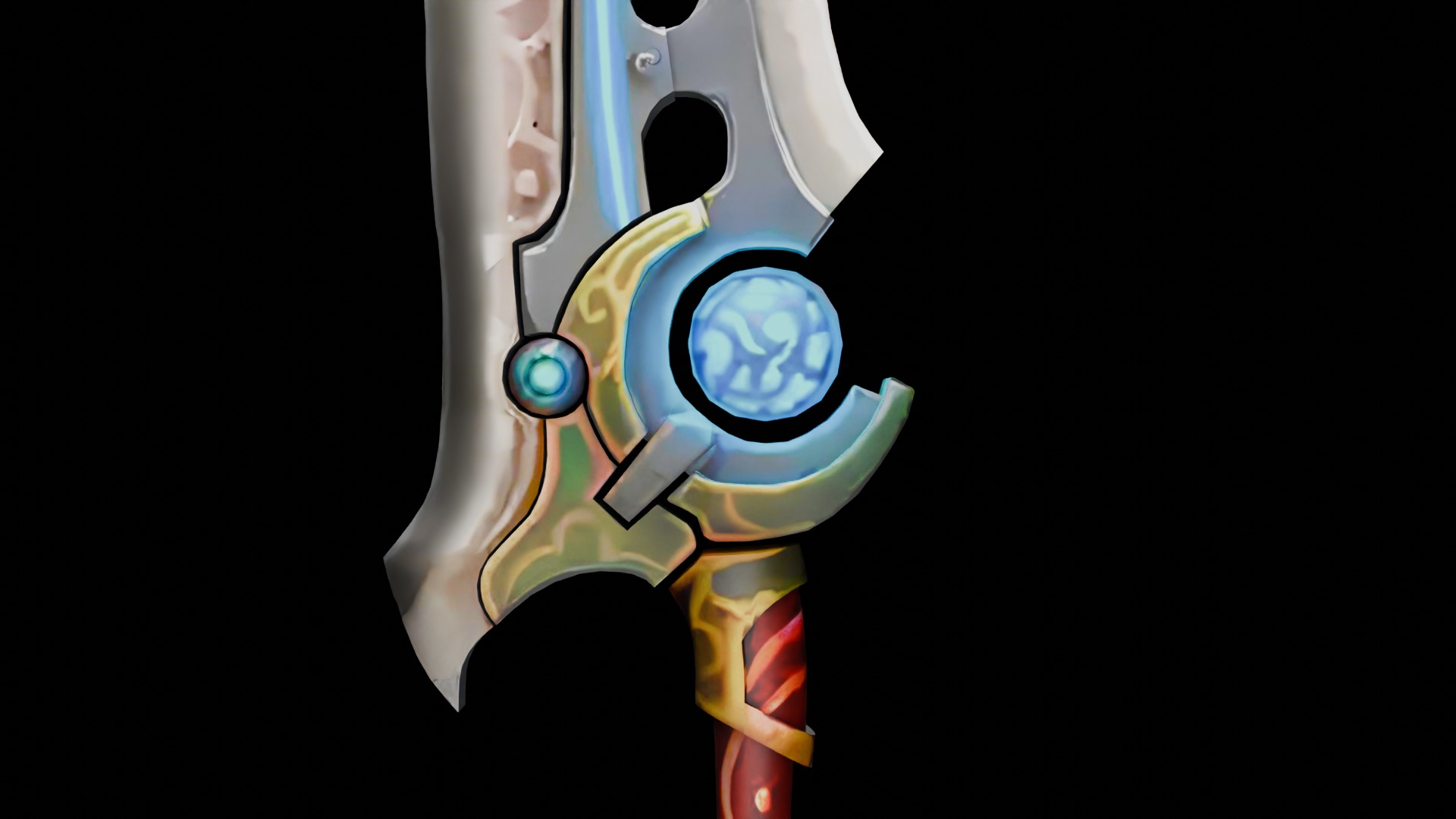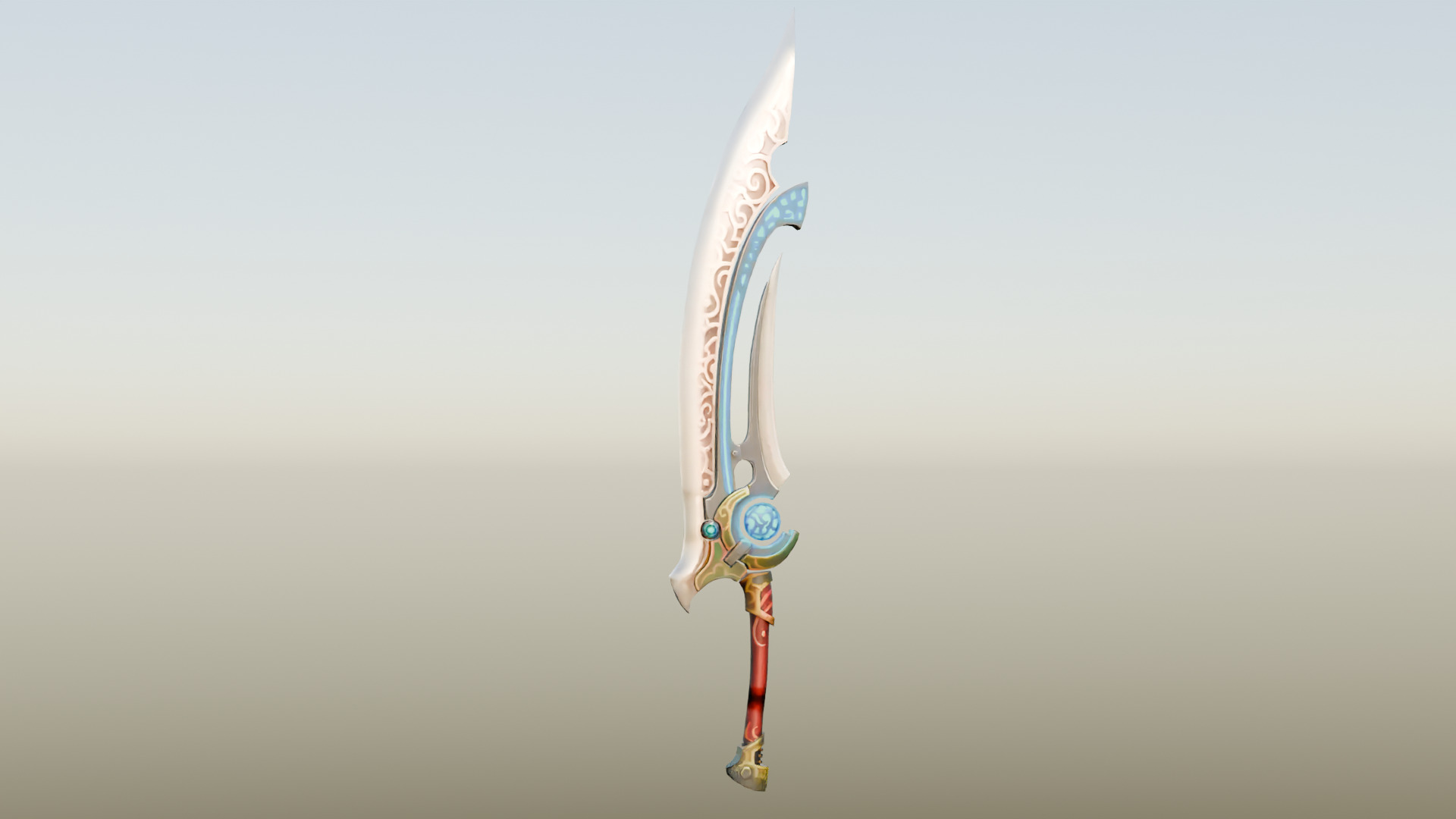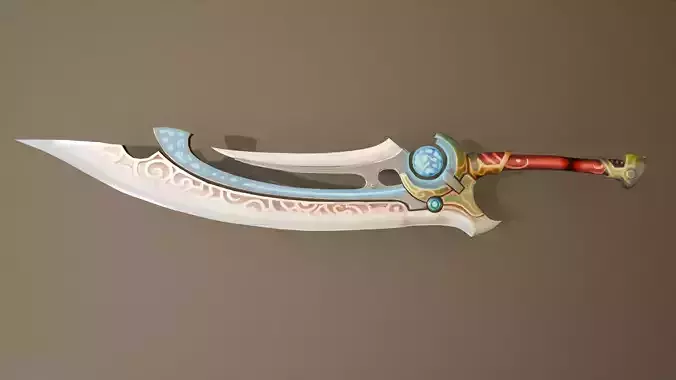
Low-poly Game Ready Fantasy Sword Low-poly 3D model
Low-poly(Game Ready) Fantasy Sword
Appearance:
Overall Shape: The sword has a distinctive curved blade with a pronounced hook or falchion-like shape near the tip. The blade is wide and flat, tapering towards the tip.
Blade: The blade is primarily silver or white with intricate blue and red patterns etched or painted onto its surface. There are also decorative flourishes and cutouts along the length of the blade.
Hilt: The hilt is elaborate, featuring a large circular guard with a central blue gemstone and smaller gems scattered around it. The grip is wrapped in what appears to be red leather or fabric, and the pommel is ornately decorated with gold and blue accents.
Length: The sword appears to be quite long, likely intended for use with both hands.
Possible Interpretations:
Fantasy/Roleplaying: The sword's design suggests it could be a prop or costume piece for a fantasy setting, perhaps inspired by ancient Egyptian or Mesopotamian weaponry.
Conceptual Art: It might be a concept design for a fictional weapon, possibly for a video game or movie.
Replica: It could be a replica of a historical weapon, though the specific design elements make it difficult to pinpoint an exact match.
Additional Notes:
The image quality is somewhat low, making it difficult to discern finer details.The sword's purpose and origin are unknown without further context.If you have any more information about the sword, such as its name or intended use, feel free to share it, and I can refine the description further.
Certainly! Here are some advantages of using 3D models, considering the image you sent:
General Advantages:
Visualization and Communication: 3D models provide a clear and accurate representation of an object from all angles, making it easier to understand its design, shape, and features. This is crucial for communication and collaboration between designers, engineers, and stakeholders.
Prototyping and Testing: 3D models can be used to create virtual prototypes, allowing for testing and experimentation without the need for physical prototypes. This can save time and resources, as well as reduce the risk of errors in the design process.
Manufacturing and Production: 3D models can be directly used in manufacturing processes, such as 3D printing and CNC machining. This streamlines production and ensures accuracy and consistency in the final product.
Animation and Visualization: 3D models are essential for creating realistic animations and visualizations, which can be used for marketing, training, and entertainment purposes.
Specific Advantages:
Detailed Design: The model appears to be highly detailed, with intricate patterns and textures. This level of detail allows for a better understanding of the object's aesthetic and design features.
Material Representation: The model likely includes information about the materials used, such as the type of metal, gems, and other decorative elements. This information can be valuable for manufacturing and production purposes.
Customization and Modification: 3D models are easily customizable. Designers can modify the model's shape, size, and appearance to fit specific requirements or create variations of the design.
Virtual Reality and Augmented Reality Applications: 3D models can be used to create immersive virtual and augmented reality experiences, allowing users to interact with the object in a realistic and engaging way.
Formats:
Mtl , Fbx , Obj and Blend.

